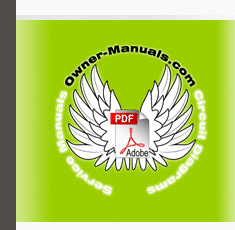|
|
|
Categories
|
|
Information
|
|
Featured Product
|
|
|
 |
|
|
There are currently no product reviews.
 ;
The manual was made available promptly. I is a clean scan of the original. I had no problem downloading it. The scan was well centered and cleanly formatted. It is as good a product as can be had without being the original document.
 ;
Received downlink in less then 8 hours, Item was in good copy condition, and told me how to program the clock timer. The price was very resonable, and the process was very automated and was GREAT to work with.
 ;
Fast service, document is OK. Thanks! Searched for it long time.
 ;
I was very pleased with the manual I got for my amateur (ham) radio. Without it I could not figure out how to input and/or change the P/L setting on my radio. It drove me nuts as the radio was essentially useless. That all changed when my manual came. Then it took only minutes and I was done. Now my radio works fine. This is an exceptionally good resource as it's a very easy and user friendly download. Thank you very much! Dziękujemy za!
 ;
It answered my question, which was how to load the paper. I did notice that the very end of the manual was not visible.
KR-11 � Basic screen functions
Chord Tone Setting
After stopping Style playback (or before starting the Arranger), you can play chords with your left hand that will sound the way you play them (without the automatic accompaniment). The Tone being used for sounding the chords is appropriately called �Chord Tone.� Along with the Chord Tone, the KR-11 will also play a bass note with (you guessed it!) the �Bass Tone�. Ordinarily these Tones are preset, but they can be changed through the following procedure.
2. Select the Bass Tone using the buttons to the left of the display, and the Chord Tone with the buttons to the right of the display. If you don�t want the Bass Tone or Chord Tone to sound, select �OFF.�
Note: Some Tones allow you to sustain the notes you play until you play other notes (Hold function), thus freeing up your left hand for other tasks between the changes. Note: When the power is turned on, <Chord Tone> is set to �Soft E.Piano� and <Bass Tone> is set to �Fretless Bs�. Note: See also �Volume of the Rhythm, Bass, Accomp, and Chord/Bass Tones� on page 27.
1. Press <Chord>.
11. Music Assistant, Pad buttons, pedals
11.1 Music Assistant: registering panel settings
The KR-11 is equipped with 32 Music Assistant memories that allow you to store almost all settings (or registrations) you make on the front panel. So far, we have only discussed the easy part of changing the preset settings. Later on, you will discover that you can also carry out a lot of in-depth programming. Those settings can also be saved to a Music Assistant memory.
Note: The KR-11 comes with a number of Music Assistant settings you can use as starting points for your own settings. Feel free to overwrite them when you run out of internal Music Assistant memories. Otherwise save your own settings to disk. Note: You can also name your settings (see below).
Loading a Music Assistant memory
1. Press the [Music Assistant] button The Music Assistant screen (see above) is displayed. 2. Use the buttons to the side of the display to select a
Music Assistant memory.
Note: Choosing <Manual> changes the panel settings to the ones in effect before the settings were recalled. Note: You can also decide when the settings relating to the Arranger are loaded. See �Music Assistant Arranger Update� on page 51.
1. Make the settings that you want to register. 2. Press the [Music Assistant] button.
Naming (or renaming) a Music Assistant memory
Here is how to name or rename a Music Assistant memory: The display responds with:
ENGLISH ENGLISH ENGLISH ENGLISH
1. On the Music Assistant screen, hold down the [Music Assistant] button and select a memory.
3. While holding down <Write>, use the buttons to the side of the display to choose a memory number. After a few seconds, the display returns to the previous page.
Note: You cannot store settings to the <Manual> memory.
2. Use <�> and <®> below the display and <v> and <w> to the left of the display to enter the name. See page 34 for a list of available characters. 3. Press <Execute>.
45
|
|
 |
> |
|
